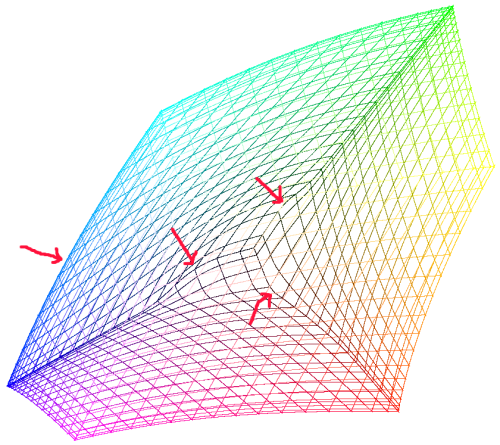For various visualization programming tasks, it's useful to have a set of colours that are as far apart as possible. I set out to write a program to generate such sets.
The first problem is that we must work in a perceptual colour space such as Lab rather than the usual sRGB, or our colours will be overly concentrated in the areas where sRGB over-represents.
Next, I set up a system of mutually repelling particles and let them arrange themselves (sliding along the sides and edges as required). This didn't work too well even just in sRGB space - the trouble is that I don't care about minimizing the distance to the most distant colours, only the nearest ones. I thought about do a Delaunay triangulation to find the nearest neighbours of each point, but it turns out that's overkill - all you need to do is just repel the 6 nearest particles (and recalculate what those particles are after each frame). If you end up with the closest points all on one side, the particle will be repelled away until one of the closest points is on the other side.
Even with this fix, I was still getting strange results. After some head-scratching, I realized that it was just to the "kinks" in the some of the edges of the sRGB gamut in Lab space:

The particles tend get "stuck" in these kinks.
I'm not quite sure what to do about this. Perhaps I can find optimal sets in a rectilinear gamut and then gradually morph this into sRGB while continuing to let the particles repel.
[...] perceptual – a program to find maximally distributed colours in perceptual colour space. [...]